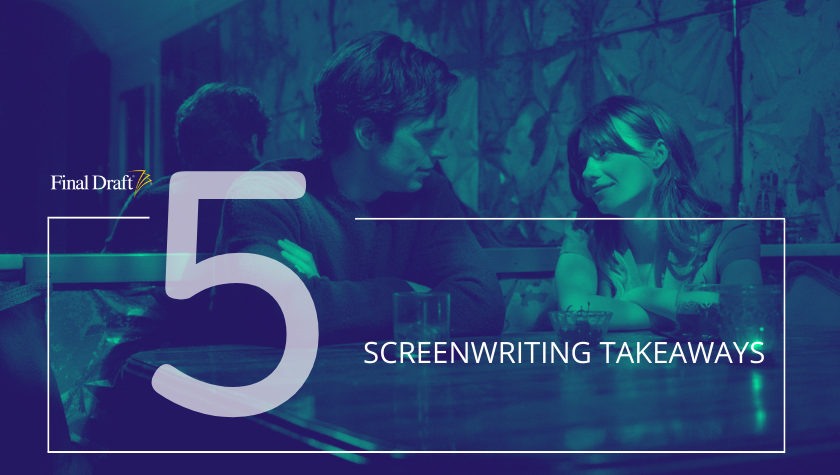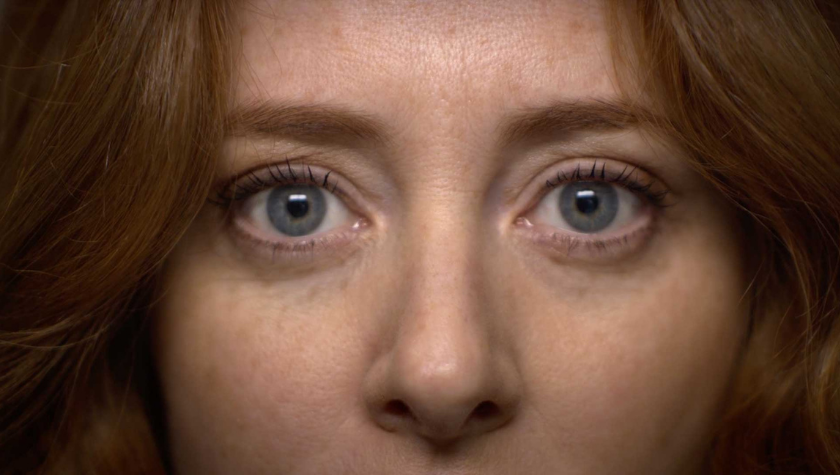Jakob's Wife' Is one Wild, Feminist, Vampiric Ride of a Horror Flick
April 14, 2021
Jakob’s Wife has the camp quality of a well-worn 1980s' horror you’d rent on VHS so you could either comfort your date or scare the crap out of your friends, and that’s quite intentional. The film stars horror icons Barbara Crampton (known for 1980s' horror classics Re-Animator and Body Double) and Larry Fessenden (who has carved a niche as both a horror actor and writer) as a wife and husband who have clearly lost their way. Crampton as a preacher’s wife, and Fessenden as said preacher living in small-town middle America.
Co-writer and director Travis Stevens gives Crampton much credit for getting the script to the screen, as she worked as a producer on the film as well. The original script by Mark Steensland won Shriekfest in 2015 and its win brought it to Crampton. Along the way writers Kathy Charles, Steensland, and Stevens all brought a unique touch to the script.
“Barbara nurtured it and developed it for years,” effused Stevens.
Stevens seems made for the vampire genre — he embraces camp, blood, and raw meat whenever he gets the chance — but he has also deeply embraced the relationship between Crampton’s Anne and Fessenden’s Pastor Jakob.
“There have been countless vampire movies, so what can you do that’s different? And with this film, that’s exploring a relationship that has grown stale and characters who feel like they’ve lost their voice. And exploring that in a subgenre, that was really interesting,” he said.
In concert with Stevens, Crampton and Fessenden make their roles believable and one roots for their relationship — even as they’re thrusting stakes through former-parishioners-turned-vampires, and draining bodies for blood to satisfy Anne’s new cravings.
Stevens, now on his second collaboration with Crampton, knows that her presence as Anne — or any horror lead — remains a huge draw.
“As a performer, there’s a little sparkle of mischief in her eye that brings her characters to life in an interesting way. I wanted to create a stage that would allow her to do a wide range of performances on, and working with her on both small, intimate, internalized scenes all the way to literal dance choreography was amazing," he said.
"I got to see her flex her acting muscles in so many different ways, and bring a lot of fire, love and kindness to her work as a producer and performer.”
Speaking of choreography, there’s a dance set-piece that any Crampton fan will go crazy for. Stevens calls it the furniture dance scene.
“There’s a scene where she returns home from the supermarket with supplies, pours herself of a big glass of her new favorite beverage, and begins dancing around her living room, rearranging the furniture in a way that she finds more appealing, and you can really feel her lust for life. It’s such a fun throwback to 1980s' movies, and it’s also so nice to see a woman of that age enjoying that liberation.”
The film is rife with female empowerment, as once Crampton turns full vampire (after a dalliance with an old flame), she sees her newfound life as a blessing in disguise; she’s ready to literally suck the blood out of life with as much gusto as possible.
Stevens enjoyed the chance to embrace his feminist side.
“If there’s a chance for a horror film to plant a seed or say something about the value of the life we live, then I think the horror film is better for it," he said.
"This story is about a woman who has lost her voice and agency, and the fantastical event that happens to her compels her to start speaking up for herself again; and talk about her needs and wants and desires. It rekindles her lust for life.”
Stevens stresses that when dealing with a story arc of a relationship, it takes two to mend fences.
“It’s not done to the point her husband is terrible, but it is still necessary for him to realize that for the relationship to work, he needs to accommodate her needs, and the primary goal with the storyline was to create that arc.”
Stevens also points out that the film was personal to Crampton on multiple levels.
“Anne is a beautiful parallel to what Barb was going through in her career. She recognized as an actress that her opportunities were being limited in how people viewed her, and she took a more active role in what she was making. The very act of the movie being made itself was a feminist act, and I’m super grateful to have been invited along for the ride,” he said.
It’s clear everyone involved in the project brought a lot of love with them on the journey. The arc of Anne and Jakob is that of love itself.
“I don’t think they have learned all the lessons they need to by the end, but they are definitely a step forward in their relationship," Stevens said.
"There is a genuine love for each other, and hopefully they can make it work.”
That said, it feels like anyone who would accept another's need for bloodsucking while simultaneously working to protect them from a controlling vampire master seems like a keeper.
Ultimately, Stevens says, Jakob’s Wife is just a really fun movie.
“After a year of the pandemic and the light that appears to be on the horizon, I am hoping that audiences will have the chance to go and have a bit of fun — and that audiences will want a bit of fun," he said.
Stevens adds that he wants audiences to "dance in the theaters and drive-ins, or their home and enjoy the big, wild, crazy '80s-style horror movie we made.”
Jakob’s Wife premiered at SXSW earlier this year and is in select theaters, on demand and digital on April 16.
Written by: Lindsay Stidham
Lindsay holds an MFA in screenwriting from the American Film Institute. She has overseen two scripts from script to screen as a writer/ producer. SPOONER, starring Matthew Lillard (SLAMDANCE), and DOUCHEBAG (SUNDANCE) both released theatrically. Most recently Lindsay sold PLAY NICE starring Mary Lynn Rajskub. The series was distributed on Hulu. Recent directing endeavors include the Walla Walla premiering (and best screenplay nominated) TIL DEATH DO US PART, and the music video for Bible Belt’s Tomorrow All Today. Lindsay is currently working on an interactive romcom for the production company Effin' Funny, and a feature film script for Smarty Pants Pictures. Lindsay also currently works as an Adjunct Screenwriting Faculty member at USC’s School of Cinematic Arts. You can follow her work here: https://lindsaystidham.onfabrik.com/



